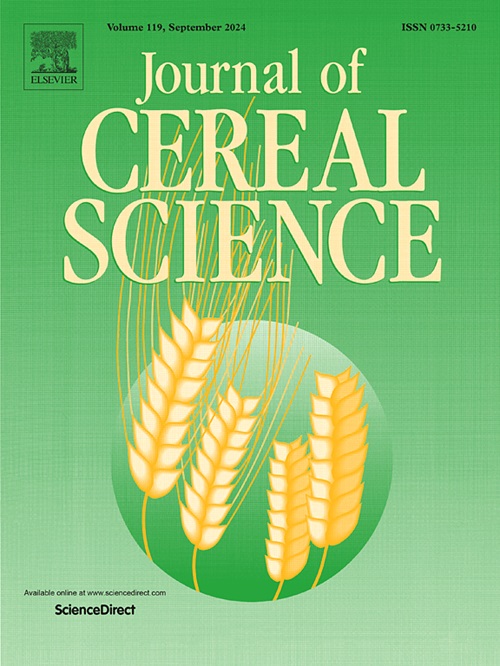Synergistic impact on postprandial glycemic response to whole grain fonio flour (Digitaria iburua) by its particle size and released phenolic compounds
IF 3.7
2区 农林科学
Q2 FOOD SCIENCE & TECHNOLOGY
引用次数: 0
Abstract
Cell wall-sourced dietary fiber and phenolic compounds (PC) are essential in imparting the health advantages linked to whole grain foods (WGFs), but their interaction in a whole grain context is not fully understood. This research explored the influence of phenolic compounds and particle size on the digestion of starch in the black fonio variety. The results highlighted the importance of maintaining cell wall integrity for efficient starch digestion, revealing that the starch digestion rate and extent decreased with increasing particle size. The rapidly digestible starch (RDS) from mill 1 (M1) and mill 2 (M2) demonstrated significant increases, attributed to the reduced availability of liberated phenolic compounds during digestion, with values of 78.08 % and 69.94 %, respectively. Meanwhile, the starch bioaccessibility were higher in the dephenolized flour (M1 and M2: 54.50 and 26.23 % respectively) than in the native (M1 and M2: 30.99 and 21.39 % respectively). The in vivo study on postprandial glycemic response (PGR) to Fonio flour showed a similar trend with in vitro starch digestion. Generalized linear modelling (GLM) revealed a synergistic interaction between released PC and particle size in modulating starch digestion (P < 0.05) and glycemic index (GI) (P < 0.01). Thus, the WGFs processing to produce appropriate flour particle size is an efficient way to maximize the health benefits of WGFs.
全谷物面粉(Digitaria iburua)的粒径和释放的酚类化合物对餐后血糖反应的协同影响
细胞壁来源的膳食纤维和酚类化合物(PC)在赋予与全谷物食品(WGFs)相关的健康优势方面是必不可少的,但它们在全谷物背景下的相互作用尚不完全清楚。本研究探讨了酚类化合物和颗粒大小对黑玉米淀粉消化的影响。结果强调了保持细胞壁完整性对有效淀粉消化的重要性,表明淀粉消化速度和程度随着颗粒大小的增加而降低。1号磨(M1)和2号磨(M2)的快速消化淀粉(RDS)显著增加,分别为78.08%和69.94%,这是由于消化过程中释放的酚类化合物的有效性降低所致。同时,脱酚面粉中淀粉的生物可及性(M1和M2分别为54.50%和26.23%)高于原生面粉(M1和M2分别为30.99%和21.39%)。对Fonio面粉的体内餐后血糖反应(PGR)研究显示出与体外淀粉消化相似的趋势。广义线性模型(GLM)揭示了释放的PC和颗粒大小在调节淀粉消化过程中的协同相互作用(P <;0.05)、血糖指数(GI) (P <;0.01)。因此,对粗面粉进行加工以生产合适的面粉粒度是最大限度地提高粗面粉健康效益的有效途径。
本文章由计算机程序翻译,如有差异,请以英文原文为准。
求助全文
约1分钟内获得全文
求助全文
来源期刊

Journal of Cereal Science
工程技术-食品科技
CiteScore
7.80
自引率
2.60%
发文量
163
审稿时长
38 days
期刊介绍:
The Journal of Cereal Science was established in 1983 to provide an International forum for the publication of original research papers of high standing covering all aspects of cereal science related to the functional and nutritional quality of cereal grains (true cereals - members of the Poaceae family and starchy pseudocereals - members of the Amaranthaceae, Chenopodiaceae and Polygonaceae families) and their products, in relation to the cereals used. The journal also publishes concise and critical review articles appraising the status and future directions of specific areas of cereal science and short communications that present news of important advances in research. The journal aims at topicality and at providing comprehensive coverage of progress in the field.
 求助内容:
求助内容: 应助结果提醒方式:
应助结果提醒方式:


